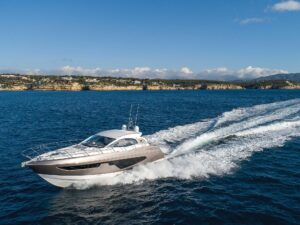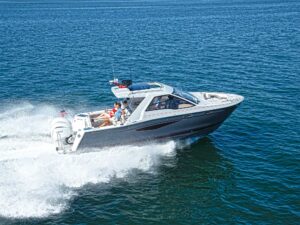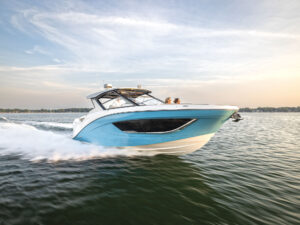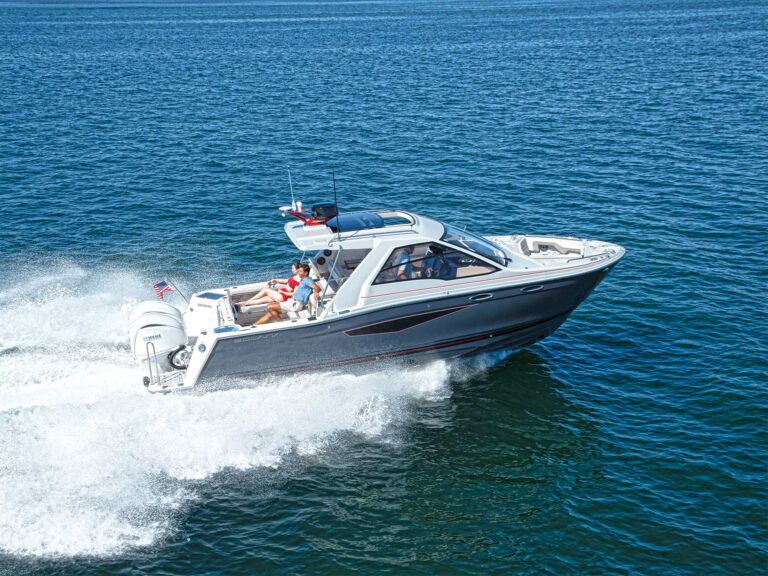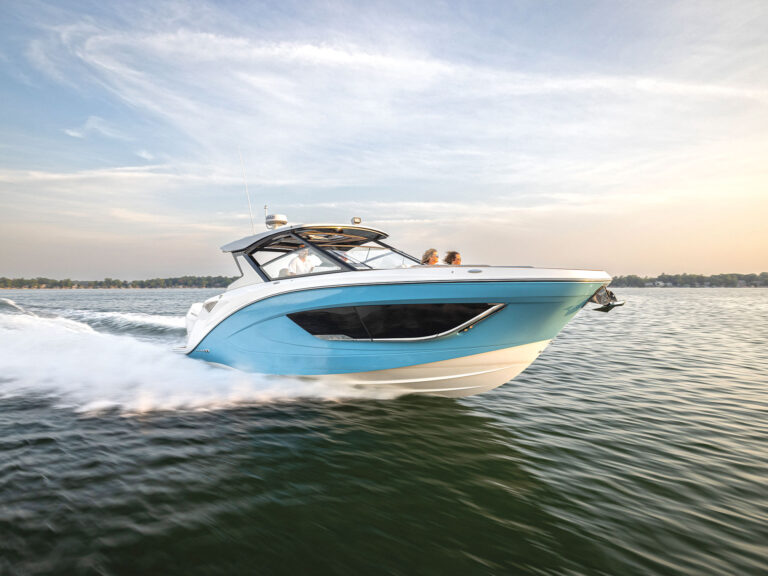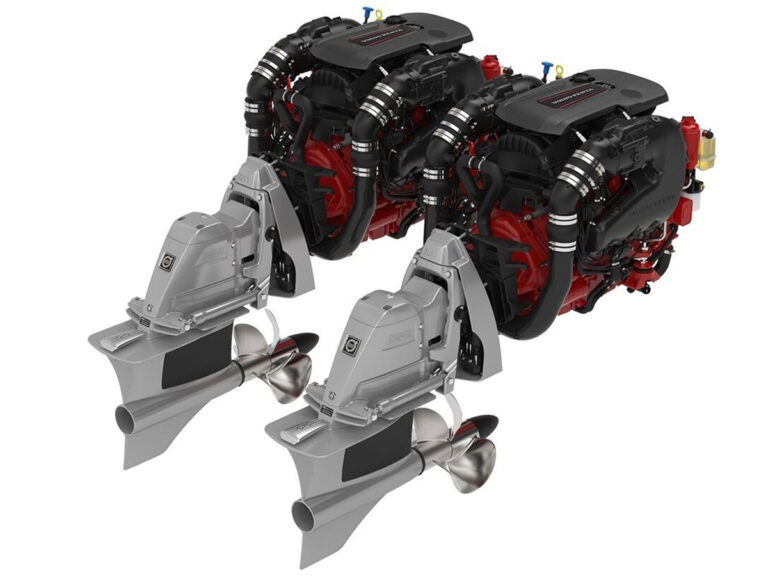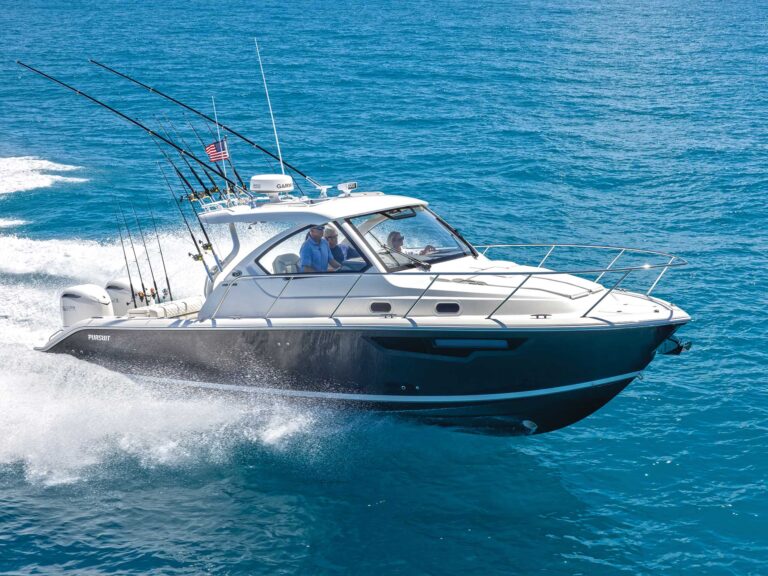Often the final decision about buying a boat comes down to the bottom line. You want to get out and chase the fish for as little money as possible, so you look for the least expensive center console you can find. There are a lot of bargain-basement boats out there, but that usually means settling for rolled gunwales and speckle-finished cockpits. With the Sea Fox 257 CC, though, you pay a low price yet still get some attractive amenities.
We ran the 257 CC for an entire season and got to know the true value of this boat. It’s not perfect (what boat is?), but for the money the 257 CC has a lot of good points. It has important standard fishing features, a family-oriented layout, and makes a solid appearance-a combination package not often seen on entry-level center consoles.
PLAYING THE ANGLES. The 257 CC fished well over the course of our test. For bait fishing, there’s an 80-gallon circulating livewell built into the transom. Some anglers don’t like having to fight fish around the Euro-transom, but both gunwales have removable coaming bolsters that extend forward to the console. The recessed inwale rodracks hold two rods per side and can accommodate fly rods. Add the four vertical holders on the helm bench, the four stainless-steel rodholders in the gunwales, and the four rocket launchers on the optional T-top ($3,075), and we had plenty of spots to stow our gear. The solidly made T-top also sported an optional electronics box ($750). A tackle stowage compartment with room for three tackle trays is built into the helm just underneath the AM/FM/cassette player. (The optional CD player costs $350.)
THE HIGHS: Plenty of fishy features you don’t always find standard. Mom’ll love the roomy console, kids the swim ladder. Good offshore manners in waves; sporty and fast when it’s calm.** **
THE LOWS: Flip-down footrest at the helm is an ankle buster. Wiring not up to snuff. Only one cleat on the bow for two docklines and the anchor rode?
The two hatches in the cockpit sole open to reveal 4’6″-by-1′-by-1′ insulated fishboxes. Instead of equipping the fishboxes with macerators, Sea Fox creatively cut costs by making them removable so you can lift them out to wash away detritus and scales. Do it right on deck with the standard raw-water washdown system.
The elevated forward casting deck is low enough to keep you from tumbling while casting, but its U-shaped design limits standing room. Snap on the cushions, though, and the casting deck becomes a decent forward seating area. It’s one of the ways Sea Fox tries to make the 257 CC more family-friendly. Others include the telescoping three-step swim ladder, walkthrough door in the transom, standard portable MSD in the roomy 5’9″-high head, and 94-quart removable cooler that doubles as a bench forward of the console.
READY TO ROCK. We had plenty of time to see if the 257 CC cut the mustard on the chase, as we ran it both inshore and offshore from summer through fall. The boat held its own in rough water, though it sometimes took some spray over the bow. It had a tough time staying on plane in the 20-to-22-mph range and was sluggish out of the hole. That may seem surprising with twin 150-hp outboards, but we suspect that they were underpropped, because Mercury rates these outboards for a maximum of 5600 rpm but we reached 6000. Once on plane, the 257 CC zipped along, hitting a top speed of 51.6 mph and cruising comfortably in the 30s. In a nice touch of refinement, the standard trim tabs are recessed into the hull so when they’re up, there’s less drag and they’re less likely to snag a line.
The 257 CC proved to be a deft-handling boat for a 25-footer, a fact we established during an afternoon of aggressive tubing. We carved tight turns, sped up, and slowed down with the grace of a smaller boat, validating the 257 CC’s versatility. The boat tracks straight at idle speeds, which helps while trolling. The twin engine setup came in handy around the docks, although you can buy the 257 CC for only $34,900 with a single 225-hp Mercury EFI outboard-plenty of power if it’s rigged right.The twin 150-hp Optimax engines, combined with the large 150-gallon fuel tank, gave us the ability to stay out all day on the water. Our test numbers back up the 257 CC’s excellent range-460 statute miles while cruising at 32.7 mph and 3500 rpm. Scale the throttles back to 3000 rpm and 27.8 mph and the range peaks at 494 miles. That’s a lot of running room when scouting for fish or taking the kids out for a cruise. All told, we had to fuel up just seven times over the season.
The Dusky 256, which sells for $44,900 with twin 150-hp Optimax engines, is one of the few center consoles that can match the Sea Fox on price. But it has a speckle-finished sole compared to the Sea Fox’s molded diamond-pattern nonslip, and the Dusky has a rougher ride because of its flatter running surface. The Sea Fox also has that 150-gallon fuel capacity, compared to the Dusky’s 110.
If you’re willing to jump up a price bracket, consider the Cobia 254 CC, which sells for $60,700 with twin 150-hp Yamaha HDPIs. It has similar styling to the Sea Fox, with a Euro-transom and a head in the console, but it’s built with a little more finish-details that appear in areas such as the anchor locker, wiring, and battery mounting.
BUILDING BLOCKS. The 257 CC is built using conventional construction techniques. It has a fiberglass stringer grid system injected with closed-cell foam. The transom and the deck are reinforced with Klegecell composite panels and the plastic fuel tank is glassed in place. (Some people prefer plastic fuel tanks over aluminum because they don’t corrode in salt water.) Before the deck is joined to the hull, Sea Fox paints a fiberglass bonding agent every 16″ along the stringers, so the deck becomes structurally bonded to the hull. The hull-to-deck joint is sealed with 3M’s 5200 sealant and screwed.The hullsides and deck never flexed or rattled during our season of use. The stainless-steel grabrail around the bow platform is a one-piece welded unit, as opposed to the screwed-together rails seen on some comparably priced boats. It won’t rattle.
The gel coat is isopthalic, a step above the orthothalic type seen on some entry-levels that is more prone to blistering. Deck hatches have stainless-steel latches, and there are gutters to sluice away water. Hydraulic steering is standard as are the raw-water and freshwater washdown systems. There are five 6″ stainless-steel cleats, with only one at the bow, primarily for the anchor rode. A second one up here would make tying off in a slip a lot easier. The helm bench has a flip-down footrest and a nice wraparound rail to give standing passengers something to grab.
The biggest gripe we have with the 257 CC is that the wiring was a little sloppy in certain areas, looking as if rushed through during production. It held up fine during the season, but could lead to problems down the road. As with many boats of this type, the 257 CC could benefit from a battery selector/cutoff switch and better protection for the batteries. In fairness, though, we had no electrical problems during our four months of testing.
Overall, the Sea Fox 257 CC is a great boat for the price. It will get you to the fishing grounds and back, fishes comfortably, and has enough features to keep the family happy on a day cruise. There aren’t many 25′ center consoles you can buy for under $50,000 that will do that.
SECOND OPINIONS. The buck stops here. And with the 257 CC, it’s obvious where that happened. The easiest part of boatbuilding is to lay up big fiberglass parts and join them. This gives you a basic boat, and the 257 CC is a good basic boat. The hull isn’t a pounder and it doesn’t surprise you with odd quirks in a turn. After running the boat in the rough waters of New York Harbor, the structure proved creak- and groan-free. I’m surprised that no toe recesses at the helm and inwales were molded in. They don’t take much more work to lay up, and they let you drive and fish in comfort and safety. Yet the trim tabs are recessed-a nice touch.
So what separates this boat from the $90,000 center consoles of the world? Once you get beyond the basic structure, the costs of time and skilled labor add up in a geometric progression to what you actually get. The 257 CC’s big, easy-to-install items such as hydraulic steering and washdowns are a plus. But when it came to the detail work, Sea Fox said whoa. Most obvious is the wiring. Open the less-than-watertight econohatch above and you see an exposed battery with wires in a tangle. No water or chafe protection, no support. Okay for our four months, but not for the long run. Buy a battery switch.
I like the family features: big console compartment and transom door. I didn’t like coming away with bruised ankles from the leaning post’s footrest hinges or that Mercury’s Smart Gauges were hard to read in sunlight. I appreciate this boat for its honesty. You pay your money and you see exactly where it went-and where it didn’t.
The 257 CC reminds me of a toy Tonka truck. Large well-built parts, no bells or whistles to break off if it gets banged around, and lots of fun to play with. Unfortunately-similar to a Tonka truck-the boat lacks a couple of accouterments.
A toy truck doesn’t have gas or brake pedals. The 257 CC doesn’t have molded-in toe recesses at the helm. What it does have is a 94-quart removable cooler that doubles as a seat-but isn’t a secure place to sit while running. And Mercury’s Smart Gauges were difficult to read, even more so after bashing my head on one of the optional T-top’s rocket launchers. Standing flat-footed at 6’2″, my head was level with the bottom of the portmost launcher.
An 80-gallon livewell in the Euro-transom, two large forward removable fishboxes, and a 150-gallon fuel tank are part of what makes this boat a good value. As does the console with a head compartment that provides plenty of room for sitting. Our assault and battery of tests proved that the 257 CC handled well in both rough and calm seas. I especially liked the recessed hydraulic trim tabs. Come up with the $35,000 and some extra for the T-top, and you’ll net a lot of boat for your money.
LAST WORD. The top dog of bottom-line center consoles.
LOA………..25’7″ ** **
Beam……….8’6″ ****
Draft (max.)…..2’7″ ****
Displacement (lbs., approx., w/o engines)………4,000 ****
Transom deadrise……..20º ****
Bridge clearance…….6’4″ ****
Minimum cockpit depth…………2’3″ ****
Max. headroom……5’9″ ****
Fuel capacity (gal.)…………150 ****
Water capacity (gal.)…………15 ****
Price (w/standard power)…..$34,900 ****
Price (w/test power)……$46,600
STANDARD POWER: Single 225-hp Mercury EFI V-6 outboard.
OPTIONAL POWER: Twin Mercury outboards to 400 hp total.
TEST BOAT POWER: Twin 150-hp Mercury Optimax V-6 outboards with 153 cid, 3.50″ bore x 2.65″ stroke, swinging 143/4″ x 19″ three-bladed aluminum props through 1.87:1 reductions.
STANDARD EQUIPMENT (major items): Hydraulic steering; 2 batteries; 94-qt. removable cooler; auto. bilge pump; bow seat cushions; portable MSD; freshwater washdown; raw-water washdown; filter/ water separator; trim tabs; 80-gal. livewell; inwale rod-racks; 4 ss gunwale-mounted rodholders.

